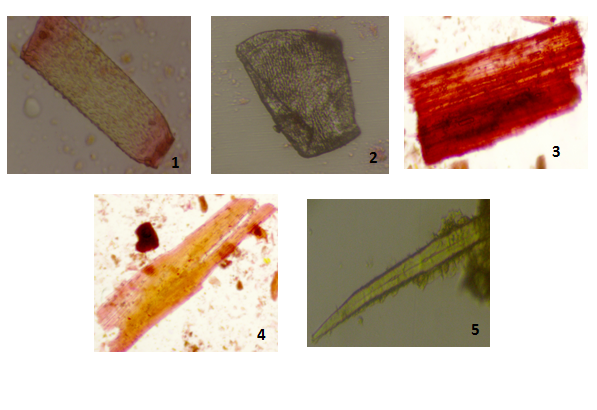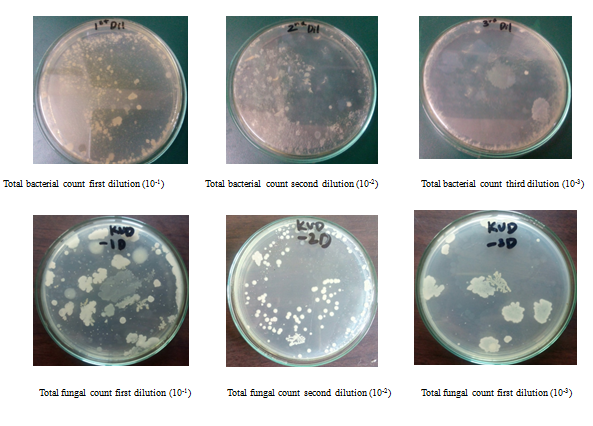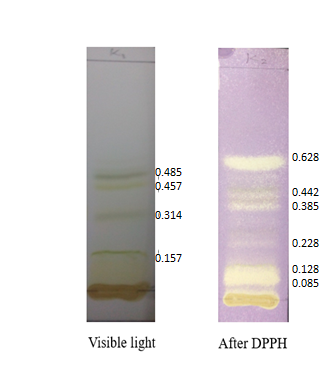Pharmacy and Drug Innovations
OPEN ACCESS | Volume 4 - Issue 1 - 2025
ISSN No: 2994-7022 | Journal DOI: 10.61148/2994-7022/PDI
Madhushree M V Rao1, Anjali R Gowda2, Haleshi C3, Vijay Danapur1*
1 Vriksha Vijnan Private Limited, Bengaluru, Karnataka
2 Dayananda Sagar College of Engineering, Bengaluru, Karnataka
3 Dept. of Botany, Davangere University, Davangere, Karnataka
*Corresponding author: Vijay Danapur, Department of Phytomedicine, Vriksha Vijnan Private Limited, 10th Main, 3rd Cross, BHCS Layout, Chikkalsandra, Bengaluru-560061(India).
Received: October 29, 2021
Accepted: November 12, 2021
Published: November 16, 2021
Citation: Madhushree M V Rao, Anjali R Gowda, Haleshi C, Vijay Danapur (2021). “A Review on Ayurvedic Formulation (Kwath) for Treating Liver Disorder [Future Clinical Benefits]”. J Pharmacy and Drug Innovations, 3(1); DOI: http;//doi.org/03.2020/1.1036.
Copyright: © 2021 Vijay Danapur. This is an open access article distributed under the Creative Commons Attribution License, which permits unrestricted use, distribution, and reproduction in any medium, provided the original work is properly cited.
Immunity is the main mechanism to protect the body against intruding microbes and environmental agents. Considering the current pandemic of COVID-19 even with curative medicine enhancing the body’s natural defence system still plays an important role in maintaining optimum health. Herbal remedies have been used to enhance immunity and treat various diseases for many years. Inspired by the Ayurvedic measures of Ministry of AYUSH, a herbal product called as “AYUSH Kudineer” or also known as “AYUSH Kwath” was developed, which could be used to boost an individual’s immunity. The product includes four traditional herbs, which are Holy basil, Dry ginger, Cinnamon bark and Black pepper. The Physico-chemical characteristics, powder microscopy and preliminary Phytochemicals of the raw materials and the product were analyzed, and TLC studies were also performed. All of the parameters of these studies were mostly found to be under the range of limits as prescribed by Ayurvedic Pharmacopeia of India. The antimicrobial activity tests proves that the product, Kudineer limits the growth of microbes, and the antioxidant activity test of the product shows that it has good free radical scavenging properties. Hence the product “AYUSH Kudineer” or “AYUSH Kwath” has immunity boosting properties.
Introduction
In view of the current pandemic of COVID-19, even with vaccine, building up a healthy immune system and maintaining optimum health becomes an essential weapon. Corona virus 2 (SARS-CoV-2), COVID-19 is a severe acute respiratory syndrome that can prevail asymptomatically or be allied with flu-like symptoms, usually appearing 5–6 days after infection which includes Fever, coughing, sore throat, shortness of breath, muscle and body aches and even loss of smell or taste in some cases and, in severe cases, atypical pneumonia. The incubation period of COVID-19 is reported to be 1–14 days. Though there are antidote for COVID-19 at this time, taking prudent steps in strengthen our immunity are advantages. Immune-boosting functional foods are foods that provide immune benefits either naturally or by supplementation. Biological ingredients from flora and fauna have been used to treat a variety of diseases by humans for thousands of years, either in pure form or as crude extracts. Large groups of people are opting the conventional method of choosing to return to the origins of all medications and fighting disease by foods [1].
One such system that propagates the gifts of nature to sustain a safe and happy life is Ayurveda. Ayurveda's vast knowledge base on preventive treatment stems from the principles of "Dinacharya"-daily regimens and "Ritucharya"-seasonal regimens to maintain a balanced lifestyle. It's a science focused on plants. Ayurveda's classical scriptures emphasize the simplicity of self-awareness and the balance that each person can achieve by raising and sustaining his or her immunity. Inspired by the Ayurvedic measures of Ministry of AYUSH, we developed a herbal product called as “AYUSH Kudineer” or also known as “AYUSH Kwath” which could be used to boost an individual’s immunity [2]. Composition of AYUSH Kudineer – Holy basil (Ocimum sanctum L.) – Dry ginger (Zingiber officinale Roscoe) – Cinnamon (Cinnamomum verum J.S. Presl) – Black pepper (Piper nigrum L.)
Ocimum sanctum L., Tulsi in Hindi or Tulasi in Sanskrit (holy basil in English) is a highly revered culinary and medicinal aromatic herb. It is often referred to as an “Elixir of Life” in Ayurveda system for its healing powers. In the Charaka Samhita, an Ayurvedic text, Charaka mentions, Tulsi has long been used in Ayurveda and Siddha medicine for both prevention and cure of influenza, common cold, headache, cough, earache, fever, colic pain, sore throat, bronchitis, asthma, hepatic diseases, malarial fever,etc [3]. Ginger (Zingiber officinale Roscoe) rhizome is extensively consumed as a spice in foods and beverages. Since antiquity (>2500 years), ginger has been used in traditional oriental medicine (Ayurvedic, Chinese, and Unani systems of medicine) to curb a multitude of disorders particularly rheumatoid arthritis, sprains and muscular aches, sore throats, nausea, constipation, fever, infectious diseases,etc. In ayurvedic medicine described in the Sanskrit texts dating back to 2000 BC, the ginger rhizome is used as a carminative, promoter of digestion,etc [4].
Cinnamon has been used as a spice and as traditional herbal medicine in several cultures for centuries, The bark is described as stimulant, antiemetic, and anti-diarrhoeal properties Pharmacological properties include anti-microbial, anti-allergic, anti-oxidant, anti-ulcerogenic, anti-diabetic, antipyretic, neuro-protective and anaesthetic activities [5]. Black pepper (Piper nigrum L.) a perennial climbing vine is one of the oldest and most popular spices in the world. Dried Black pepper is extensively used in culinary and its extracted oil is used in making medicines [6].Black pepper is a vital ingredient of “Trikatu” (three acrids). In equal proportions, long pepper (Piper longum) and ginger (Zingiber officinale) seek to address the disturbance of the three “doshas” (psychophysical components of the human body) that can contribute to illness [7]. Therefore the aim of the study was to conduct a detailed study on pharmacognostic, phytochemical and biological aspects of AYUSH Kudineer, which can be suggested as an add-on therapy against present situation of covid-19.
Materials and Methods
Sample preparation: plant materials were collected and screened, later made into powder using pulverizer and mixed according to ratios further, stored in airtight container till use. Physico-chemical values such as the percentage of total ash, acid-insoluble ash, water-soluble ash, and water and alcohol-soluble extractives were calculated as per the Indian Pharmacopoeia [8].Preliminary phytochemical tests was performed according to [9] TLC fingerprinting profile carried as per [10] For powder microscopy studies were prepared as per [11], Limit for total microbial count provided by WHO Guidelines was followed and also Indian herbal pharmacopoeia [12]. Anti-microbial test was evaluated by agar well diffusion method [13]. Anti-oxidant test detection by bio-autography method [14].
Results and Discussion
Organoleptic Evaluation
The Organoleptic properties are unique for the product s (table 1)
|
|
Colour |
Texture |
Odour |
Taste |
|
Product |
Brown |
Fine Powder |
Strong |
Pleasant |
Table 1: Organoleptic features
Physico-Chemical Evaluation
Physico-chemical evaluation helps in determination of various adulterants such as metals, salts and silica or improper handling of raw materials thus acting as a primary step in standardization of drugs. All the parameters were evaluated as mentioned in WHO guidelines (table 2)
|
Sample |
Total Ash (%) |
Acids Insoluble Ash (%) |
Alcohol soluble extractive value (%) |
Water soluble extractive value (%) |
|
Product |
12.65 |
4.3 |
35.2 |
57.6 |
Table 2: Physicochemical features
Powder Microscopic Analysis
Powder analysis helps in identification of whole or broken parts of the plant which are unique and plays a significant role in authentication of crude sample (Fig 1).

Fig 1: Powder characteristics
1- Fragments of vessels 2- Part of a larger reticulately thickened vessel
3- Part of a group of fibers 4- Lignified fiber 5- Simple trichome
Preliminary Phytochemical Analysis
Test revealed the presence of various phytochemicals, alkaloids, flavonoids, tannins, steroids and phenols and showed negative result for the presence of saponins (table 3).
|
Phytochemicals |
Phenols FeCl3 test |
Tannins Lead Acetate test |
Flavanoid Flavanoid Test |
Steroids Salkowski test |
Saponins Foam test |
Alkaloids Mayer's test |
|
Inference |
Positive |
Positive |
Positive |
Positive |
Negative |
Positive |
|
Observation |
Intense coloration |
White Precipitate |
Magenta colour formation |
Red coloration at the junction |
No Foam Formation |
Creamy white precipitate |
Table 3: Preliminary Phytochemical Analysis
TLC profile
After running the TLC sample in the solvent system and observing in Visible light, UV light. Later spraying the sample with Anisaldehyde-H2SO4 and Ethanolic-H2SO4 reagents showed the presence of various bands. Under visible light 4 bands were observed, 13 bands under UV light, 2 bands after spraying Anisaldehyde-H2SO4 and 9 bands after spraying the Ethanolic-H2SO4 (Fig 2).

Fig 2: TLC Chromatograms
Microbial Limit Test
Total bacterial count
First dilution (10-1) – 490 colonies; CFU/gram of raw drug material = 4900
Second dilution (10-2)– 120 colonies; CFU/gram of raw drug material = 12000
Third dilution (10-3)– 40 colonies; CFU/gram of raw drug material = 40000
Total fungal count
First dilution (10-1) – 380 colonies; CFU/gram of raw drug material = 3800
Second dilution (10-2)– 150 colonies; CFU/gram of raw drug material = 15000
Third dilution (10-3) – 32 colonies; CFU/gram of raw drug material = 32000
The total bacterial and yeast/mould count indicates that all the study material conforms with the result mentioned in Ayurvedic Pharmacopeia of India and Indian herbal Pharmacopeia guidelines (Fig 3)

Fig 3: Microbial Limit Test
Pharmacological Studies
Antibacterial activity
|
Sl No. |
Name of the Bacteria |
Zone of inhibition (mm) |
|
1 |
E. coli |
17.0±0.471 |
|
2 |
P. aeruginosa |
16.0±0.816 |
|
3 |
S. aureus |
14.0±1.24 |
Antifungal activity
|
Sl No. |
Name of the Fungus |
Zone of inhibition (mm) |
|
1 |
A. niger |
20.0±1.24 |
From the obtained zones of inhibition of antibacterial and antifungal activities we can conclude that the Kudineer product has a sufficiently good antimicrobial activity
Antioxidant Activity: Bioautography
By observing the bands obtained after spraying the Kudineer sample 0.2% DPPH solution we conclude that the product has a sufficiently good antioxidant activity (Fig 4).

Fig 4: Antioxidant activity
Conclusion:
One of the key learning of COVID-19, was understanding the importance of optimal health and healthy immunity as they shield and protect us from the external environment. In India, the practice of modern medicine co-exists with indigenous systems of medicine, such as Ayurveda, Unani and Siddha, which are extensively accepted by wide sections of the population. In response to the COVID-19 crisis, we developed a product called as “AYUSH Kudineer” or also known as “AYUSH Kwath” which could be used to boost an individual’s immunity. Various tests including pharmacognostic, phytochemical and pharmacological were done. The Physico-chemical characteristics and preliminary Phytochemicals of kudineer were analyzed, and TLC studies were also performed. The antimicrobial activity tests proves that the product, Kudineer limits the growth of microbes, and the antioxidant activity test of the product shows that it has good immunity boosting properties. Hence “AYUSH Kwath” or “AYUSH Kudineer” could be a good herbal immunity boosting product.
Acknowledgement: Anjali R Gowda & Madhushree MV Rao thank Vriksha Vijnan Private Limited for providing space to conduct the experiments and Vijay Danapur for his constant support and assistance.
Conflict of Interest: None
Author (s) Contribution: Experiments related to this manuscript were conducted by Anjali R Gowda & Madhushree MV Rao. Drafting of the manuscript was done by Madhushree MV Rao. Vijay Danapur drafted designed and supervised this study and edited the manuscript. Plant identification and Technical support was provided by Haleshi C.